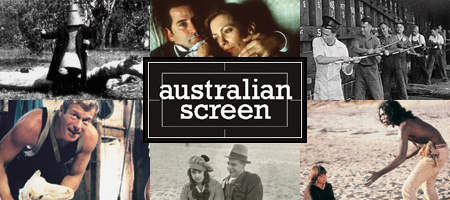
This clip is only available on the australianscreen online website:
Description
This clip shows a compilation of images depicting Indigenous involvement in Australian Rules football over more than a hundred years. It includes black-and-white photographs of players, colour film excerpts from modern games, historical illustrations of early games and a silhouetted re-enactment showing Indigenous men playing the football game 'marn grook'. The voice-over refers to Australian Rules football as an opportunity for Indigenous players to compete equally with non-Indigenous Australians and includes a discussion of the origins of the game.
Educational value
- This clip provides one perspective on Australian Rules football, that of continuing Indigenous involvement in the game from its origins to today. The black-and-white photographs of Indigenous players stress a long history while the modern colour film footage indicates continuing involvement. The use of the name 'marn grook' in the film title asserts Indigenous identity.
- Involvement in the Australian Football League (AFL) is presented as a means of Indigenous people achieving on equal terms in Australian society, experiencing equality 'body against body'. Between 1904 and 1998 there were approximately 100 Indigenous players at the top level. Gaining recognition on the football field enabled players to make a living and more recently to use it as a platform to challenge racism and fight for rights.
- This clip provides evidence of the existence of an Indigenous football game known as marn grook in the 1840s. The commentary refers to a 'striking similarity' between marn grook and the new game of Australian Rules football established in the 1860s. While historians such as Jim Poulter claim football's Indigenous origin, this is disputed and the account of Protector William Thomas's observations of a game in the 1840s is left for the audience to interpret.
- The clip includes commentary referring to the generally accepted role of Thomas Wills and his cousin H C A Harrison in the development of elements of soccer, Gaelic football and rugby union into the new game of football in the 1860s. This is the way the origin of Australian Rules is presented in the official AFL history by historian Gillian Hibbens, who controversially rejects any claims of Indigenous origins of the game as unproven.
- This clip presents positive images of Indigenous and non-Indigenous players over time. The inclusion of team photographs from the past emphasises the continuity in Indigenous history and an instance of positive and apparently equal interrelationship between Indigenous and non-Indigenous people in Australia's past. This emphasis on cooperation suggests the film's 1990s context with its focus on reconciliation.
- This clip uses a range of visual images, music and sound to create continuity and change. The commentary and the roar of the crowd accompanying the footage from a modern game creates the excitement and speed of today's Australian Rules football while the re-enactment sequence with its softer music and moving silhouettes of footballers against a blue background of the Australian bush evokes poetically the past game of marn grook and its players.